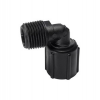whetrick1
Well-Known Member
- Joined
- Mar 3, 2019
- Messages
- 464
- Reaction score
- 232
- Points
- 43
- Age
- 65
A few ounces of oil that would be diluted by how many gallons of gas?
Intake crud buildup
Sent from my iPhone using Tapatalk
A few ounces of oil that would be diluted by how many gallons of gas?
You are totally not getting a Christmas card from Mishimoto now.There's fuel constantly running through the intake. If you're using a high detergent fuel (like Top Tier), how's it going to crud up?
Based on a video I watched on YouTube with a high mileage Hemi, 2 ounces was collected in 3000 miles. If you figure 18mpg over 3K miles, you're looking at 166.67 gallons. That's 2 ounces of oil vs. 21,333.33 ounces of gasoline flowing through that same intake. That's a ratio of 1:10,666.67.
...but if it helps you sleep at night...
I think I'll survive.
I'll take my 2 OEM connections that could leak a vacuum and leave the 5 connections for a catch can install.
5 connections - crankcase to catch can (2), the can seal itself (1), the can to the intake (2)
Some cans have multiple connections as well, like the hose fittings screwed into the can or multiple seals/drain valves in the can, but I kept it basic.
I'd feel differently if we were talking about a GDI design instead of the old school port injection.
And if your can comes apart and has an O-ring or gasket, that's 5 connections that must be air tight. One at each end of the hose segments and the can.Mine hooks up from the PCV to the can then from the can to the intake right under the throttle body.
.. and don't do like a customer did and use 5,000 (ok not really) plastic adapters from his local hardware store to get it to work .. then wonders why we can't get the thing (engine) to idle properly and run correctly -- "remove that POS abomination and go back to stock and see if the performance returns"
I haven't had any problems with mine. No leaks. Engine runs and idles great. I don't know what you're talking about. I don't consider it a POS. Have you used one yet??

Sounds good.
I didn't say oil separators were POS' I said the customer's was ..
he was using cr@p like this:
View attachment 39645
he also added a 2" throttle body spacer (with no gaskets) and a CAI with the same adapters as above.
Yes - I had a nice oil separator on one of my previous vehicles (426HP 5.4L Ford engine).
If setup properly with proper adapters, they work great.
Tim N
There is a TON of info on the internet about the reasons why an OCC is a good idea...especially for DI engines that have no fuel wash over the valves to prevent them from getting caked with carbon buildup. Without an OCC, the oil/gas blow by from the PCV gets rerouted back into the intake to get reburned. Unfortunately, the oil will start to cake up on the top side of the valve over time and can create valve issues which result in poor performance. The OCC catches all of the "gunk" and prevents it from reentering the intake. It will not prevent 100% of the carbon buildup but a good amount which will allow the engine to run longer before you should have an intake cleaning performed. Most folks say to have the intake professionally cleaned every 30-45K miles. My dealer does it using BG products (the best in the industry) for around $200. If you plan to keep the truck for a while, invest in the cleaning service. Some folks try to use SeaFoam or Intake spray but there have been several posts of how it's not nearly as effective as a professional atomized cleaning of the entire intake and valves. Hope this helpsThis is a very long thread with much to say about catching oil, yet no one has made a clear case for why it should be caught.
The Ram 5.7 Hemi isn't Direct Injection, so...There is a TON of info on the internet about the reasons why an OCC is a good idea...especially for DI engines that have no fuel wash over the valves to prevent them from getting caked with carbon buildup. Without an OCC, the oil/gas blow by from the PCV gets rerouted back into the intake to get reburned. Unfortunately, the oil will start to cake up on the top side of the valve over time and can create valve issues which result in poor performance. The OCC catches all of the "gunk" and prevents it from reentering the intake. It will not prevent 100% of the carbon buildup but a good amount which will allow the engine to run longer before you should have an intake cleaning performed. Most folks say to have the intake professionally cleaned every 30-45K miles. My dealer does it using BG products (the best in the industry) for around $200. If you plan to keep the truck for a while, invest in the cleaning service. Some folks try to use SeaFoam or Intake spray but there have been several posts of how it's not nearly as effective as a professional atomized cleaning of the entire intake and valves. Hope this helps
What??? He asked a question and I answered it and also provided some additional insights. That's what we're talking about hereThe Ram 5.7 Hemi isn't Direct Injection, so...
I have had the BG intake cleaning performed on my 2012 Hyundai Azera with GDI, but that's not really what we're talking about here.
